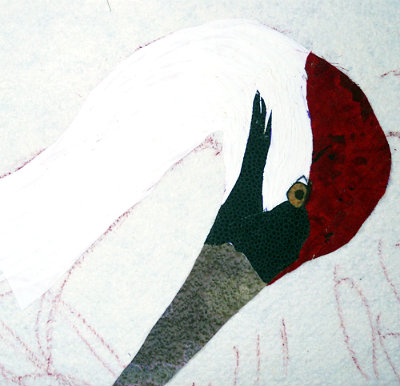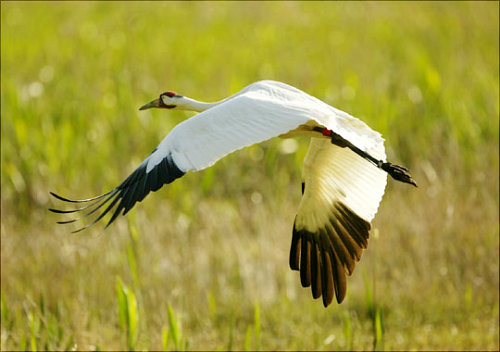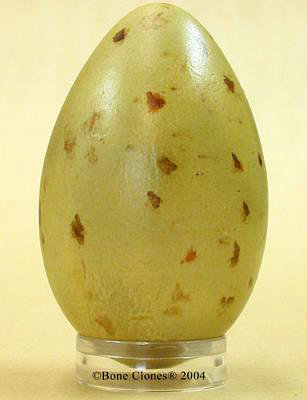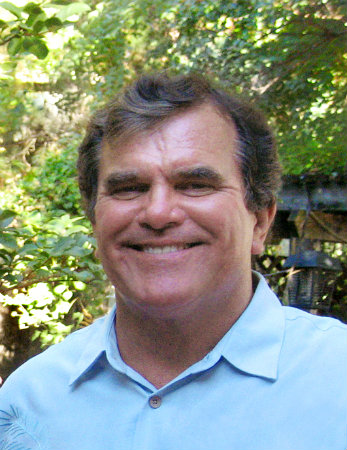“The free-flying Whooping Crane population will be lost within 5 years” (Avian Wildlife Expert)
Sep 3, 2012

With thanks to Tracy McCabe Stewart
Editor’s note: The following was written by Jim Wiegand, responding to the claim that Whooping Crane experts blame drought (global warming?)—not wind turbines—for the recent plunge in Whooping Crane numbers. Wiegand disagrees.
—Jim Wiegand, California “raptor” specialist and Berkeley-trained wildlife biologist
Wind turbines are as inherently dangerous as a handgun. Plain and simple, they are killers. Instead, people should be promoting new wind turbine designs.
I will tell you about the US Fish & Wildlife Service (USFWS), whose biologists monitor Whooping Crane survival. USFWS biologists did not find or produce the bodies of the hundreds of missing Whooping Cranes that have disappeared over the last several years. In fact, if you look at USFWS reports, you will notice they always sidestep the wind turbine danger for cranes. (Incidentally, while examining these reports, notice the lack of GPS and tracking data given about these birds.)
I have experts who have been involved with these cranes for decades, providing me with up-to-the-minute information. They love these birds and are 100 percent convinced the wind industry is killing these birds and hiding the bodies.
Consider the testimony from Tom Stehn and other experts, given during a lawsuit in Texas. It conflicts with information given out publicly by the USFWS:
But the strange thing that happened in, not only in the year of 2008-2009, during that drought, many whooping crane juveniles were observed without their parents, wandering around the National Aransas Refuge. And as Dr. Chavez will report in his testimony, if there’s a food scarcity, the number one concern of the crane pair is to survive themselves. That’s number one. Number two, if there’s enough food, the chick can survive.
“And it appears from the evidence that, actually Dr. Chavez has observed this happening, that the parents, if there’s a food scarcity, will hoard the food for themselves, and the chick leaves the parents searching for food elsewhere. So the family situation is broken up during that type of stress.”
—from Dr. George Archibald’s testimony, US District Court, “The Aransas Project v. Bryan Shaw et al.,” pp. 75-6. Click here to go directly to pp. 75-6.
What Archibald describes, above, is not “drought” mortality. Adults of any species are much more skilled at foraging and would easily out-survive their offspring in severe drought conditions. This is wind turbine mortality. Adults are leaders and flock leaders are in front of their groups in flight. They would be the first to encounter turbine blades.

Make no mistake on this, we will be losing the Whooping Crane population to the propeller-style wind turbine, and when it happens I want everyone to remember the corruption behind all this.
» The USFWS with their “voluntary regulations” for the wind industry.
» The bogus mortality searches around turbines with search areas 8-10 times too small.
» The wind industry gag orders written into contracts with leaseholders and employees.
» The high security at all wind farms.
» The wind industry personnel picking up bodies and hiding them.
» Bogus population surveys.
» Bogus impacts studies
» The 100’s of Whooping Cranes that went missing shortly after thousands of wind turbines were placed in their habitats.
» Most of all, remember the silence about any of this from the USFWS and the wind industry.
In 2011, 272 of the birds were counted in the Aransas Wildlife Refuge before they left on their northward migration to Canada. The birds went on to nest and produce 35 fledged young. At that time there were approximately 300-plus cranes in the flock.
This year, after they migrated to the Aransas Wildlife Refuge, only 192 were counted. More than 100 of these birds disappeared in a year’s time. To help cover up this catastrophic loss, the USFWS adopted a new methodology for “estimating” Whooping Crane numbers. The new USFWS methodology was put in place so the declining Whooping Crane population could then be exaggerated. With this phony survey method the population was then estimated 27% higher, at 245. This is part of the wind industry mortality cover-up that has been going on for over 28 years between the industry and the USFWS.

Fact is, there has been a dramatic increase in the mortality of the Whooping Cranes since 2006 and their population has been declining. Over this period of time thousands of wind turbines have been stuffed into their migration route. In a few years there will be so many turbines with so much rotor-sweep in their habitat, it will be impossible for them to survive. It is my belief that the free-flying Whooping Cranes population will be lost within 5 years.
A footnote about eagles and wind turbines. It is not a good time to be an eagle in America. Any day now the USFWS will be issuing new standards for the wind industry. These new standards, or changes in the laws, were requested by the industry. The wind industry wants to expand into America’s wetland habitats and in the process they know they will be killing many bald eagles. The new standards or regulations will allow this industry to build their wind farms and in the process not let an increase in eagle deaths stop them. The new proposals also allow for wildlife groups like the Sierra club to be compensated during the mitigation process.
Imagine that! Eagles will die and wildlife groups will be paid off!
With their unregulated expansion, the wind industry will soon be killing several hundred bald eagles a year from collisions with their deadly turbines. In California, the golden eagle population is already collapsing. This is not conjecture; It is fact. Thousands of square miles of eagle habitat now sit empty. What is happening to this nation’s eagles by the wind industry is only one chapter of this industry’s insidious 28-year mortality cover-up.
» Coal, natural gas and other energy sources are not exterminating rare, highly protected bird species. Wind turbines are and I have the proof.
» Coal, natural gas and other energy sources did not destroy the habitat for the California Condor.
» Coal, natural gas and other energy sources are not creating bogus mortality and population studies or hiding the deaths of hundreds of Whooping Cranes.
» Coal, natural gas and other energy sources are not wiping out the Golden Eagle population in California.
» Coal, natural gas and other energy sources are not wiping out the Golden Eagle population in Scandinavia.
.

Editor’s note: We also recommend, “Wind Power Takes Precedence over Protecting Endangered Cranes” (9/4/12).

Comment by Melodie Burkett on 09/03/2012 at 9:29 pm
This is a sad time to be living in North America. The rules to protect our wildlife were 100 years in the making and just like that …poof…the wind industry is now God and we all bow down and pay absolute homage to this false GOD.
For shame, for shame, for shame. Woe unto us.
Comment by Karen Bessey Pease on 09/03/2012 at 10:23 pm
You know … it wasn’t long ago that I read a novel in which Sandhill Cranes were central characters. Until then, I guess I didn’t how endangered they were, since we don’t ‘host’ them here in Maine.
But we DO host bald eagles, and golden eagles … and Bicknell’s Thrushes … and we have bats now at risk from White Nose Syndrome … and on and on and on.
Please, Mr. Wiegand, keep the pressure on the wind developers. If I know anything … I know that you will be subjected to critcism and scorn for taking this firm stance. But please know this—many citizens support you—even if the “industry” tries to discredit you, and the governments which support it disregard or minimize your voice.
We must stand together. We must not be cowed by those with influence or power.
Thank you for speaking out so strongly on behalf of those who cannot speak for themselves.
Kaz
Comment by BARRY FUNFAR on 09/04/2012 at 1:29 am
My childhood was spent growing up on a farm in southeastern North Dakota. This is within the Central Flyway for many species of birds, including the Whooping Crane. Many times my father would point them out, their black wingtips standing out prominently. During my years there at home the numbers I remember are 26-28. Not very many. From what I remember this was the total number of these special birds at that time. That was in the 1950s.
To have them increase in numbers through diligent efforts on the part of many concerned people, only to have their flocks decimated by near useless wind turbines, is a travesty of our time. Ignorance gets what it deserves. The waste of billions of our finite tax dollars given for subsidies to Big Wind and ill-advised local governments is a crime against humanity.
Comment by Jack Goellner on 09/04/2012 at 10:25 am
This sickens me. Truly it does. I’ve long wanted to see Whooping Cranes. Now I think I never will. I’ve seen a lot of bald eagles, though, and I hate the prospect of their being decimated by wind turbines.
Editor’s note: The writer is the Director Emeritus of the Johns Hopkins University Press, publisher of numerous wildlife books.
Comment by Bill Heller on 09/04/2012 at 12:29 pm
Thank you Jim Wiegand for a great article! It sickens me that not even Big Oil can get away with manipulating our government to the extent that Big Wind does. I’m also sickened by how so many “environmentalists” are backing the wind industry’s commitment to destroy wild areas and also invade residential areas. A snail darter can stop a dam from being built, but massive birdkills get a pass. John Muir is rolling over in his grave over how Sierra Club has sold its soul to the AWEA.
And the real problem is that on the grand scale, so few people are aware of how the wind industry controversy impacts them. Most folks only occasionally see a wind turbine, or they just read the hype and buy into it. We have to all just keep trying to get the truth out. As Ike once said, “Public opinion wins wars.” And so, we all must cry out loud in blogs, op-eds, comments sections of news stories, call-in radio shows, and any other venue that gives voice to the common person. (And if you knew me, you’d know that fighting to stop a wind turbine is the last thing I could ever imagine myself doing a few years ago.)
John Muir, founder of the Sierra Club
Comment by Jim Wiegand on 09/04/2012 at 8:50 pm
I want to thank everyone who commented here, and I especially want to thank Calvin for putting this site together. Your concerns for wildlife and support are greatly appreciated.
As for the scorn, criticism or anything else that may come my way, I can handle it. I have been in this position before. Nevertheless, I do expect a lot of resistance. After all, I am tearing down a facade that this industry has been working on for decades.
For more insight into the wind energy industry and wildlife, I recommend these two articles, “The Twenty-Eight-Year Wind Industry Cover-Up, Part I and Part II.
Comment by Jim Wiegand on 09/07/2012 at 4:33 am
More than 2 years ago I wrote to National Geographic about their very poor coverage on the lost Whooping Cranes:
“As you well know, last year (2009) the Whooping Crane flock lost 57 members. In Texas, 23 were reported lost on their wintering grounds. Officially, some of this decline is attributed to the South Texas drought that affected the birds’ food and water sources. I think there is much more to this story that needs to be told. At one time there were tens of thousands of these Whooping Cranes that wintered in Texas. I know time has changed their habitat but a little flock of 270 should be able to find plenty food in Texas.
“What is not disclosed in the article is the extreme danger that propeller-style wind turbines pose to the Whooping Cranes. Thousands of these wind turbines exist all along the Whooping Cranes 2500 mile migration route, and a new wind farm has recently been constructed in Whooping Crane habitat south of their favorite wintering grounds at the Aransas wildlife refuge.
“Despite knowing all this, no one in government will stand up and say a word. It is time to admit that the wind turbines are killing Whooping Cranes. Instead, there is only talk about the threat of collisions with transmission lines. Plain and simple, there is and has been a long-standing cover-up concerning bird mortality and the propeller-style wind turbine. It goes all the way back to Altamont Pass and extends all the way to Washington.”
Now read the truth from the Dec 2011 the Whooping Crane trial transcript, page 168:
Comment by Jim Wiegand on 09/26/2012 at 7:37 pm
Look what Tom Stehn said in this article about the wind industry threat to whooping cranes…………..http://www.msnbc.msn.com/id/23389384/ns/us_news-environment/t/wind-turbines-may-threaten-whooping-cranes
“Basically you can overlay the strongest, best areas for wind turbine development with the whooping crane migration corridor,” said Tom Stehn, whooping crane coordinator for the U.S. Fish and Wildlife Service.
The service estimates as many as 40,000 turbines will be erected in the U.S. section of the whooping cranes’ 200-mile wide migration corridor.”
40,000 wind turbines in the whooping crane migration corridor will create over 16 billion cubic feet of airspace with turbine blades spinning at 200 mph. These figures do not include the wind developments north of the US border in Canada. This is why the free flying population can not possibly survive.
Comment by Jim Wiegand on 11/23/2012 at 11:55 am
If society wants to save the whooping cranes and other species, action must take action. A reasonable beginning would be the elimination of the production tax credit given to this industry. The wind industry has had this kickback from the taxpayer for decades. Soon a vote on extending this12 billion gift to the industry, comes up before Congress. One would think that after knowing the true impacts, no one would ever want to reward this industry for what has truly become an environmental disaster.
In an attempt to hide the wind industry impacts to the whooping cranes, last year the USFWS changed their survey methodology so their numbers could be exaggerated. This was done because when using the previous count method, the whooping crane numbers dropped by nearly 100 cranes. This year I believe that the official count will be delayed until after Congress votes on the production tax credit. For decades this count was conducted in early December.
That is why what I am about to say is very important. Congress should demand an accurate 2012 winter count for the whooping cranes along with their age class numbers. The public has a right to know the fate of the whooping cranes. This count should be done before there is a vote on the production tax credit (PTC).
If Congress does not do this, then it is apparent they are part of this cover-up.
Comment by Jim Wiegand on 01/12/2013 at 3:03 pm
Based on the steady increases in population prior to 2006, the current 2013 whooping crane population should be in the range of 375-400. Sadly it is not even close. On January 4, 2013 The Whooping Crane Conversation Association posted this message on their site.
Total Whooper Population Count Urged:
Whooping Crane Conservation Association (WCCA) president Lorne Scott has urged Secretary Ken Salazar, U.S. Department of the Interior to resume regular aerial total population counts of whooping cranes on Aransas Refuge. The aerial census of the total whooping crane population has been used for the past 61 years. During 2012, the U.S. Fish and Wildlife Service decided to convert to a statistical survey method using hierarchical distance sampling. In a letter to Secretary Salazar, President Scott writes, “The WCCA sees the total count census as the most practical, economical and having the most scientific value”. Citing the Service’s “2011-2012 estimate of 254 plus or minus 62 Whooping Cranes”, Scott wrote, “This degree of uncertainty for a critically endangered species is simply unacceptable.
“The WCCA sees the total count census as the most practical, economical and having the most scientific value. Three aerial counts between December 1 and 20 would provide a good count of the total number of birds arriving in the winter population. Flights every two weeks, after the December 20 count, until the cranes return north, would provide estimates of population losses during the winter. We note that as of December 27, 2012, the Aransas Refuge new website still does not report any crane numbers from approximately seven flights conducted this fall. We urge you to resume regular aerial total population counts as soon as possible”.
President Scott’s complete letter is posted this site:
http://whoopingcrane.com/total-whooper-population-count-urged/.
Comment by Cale on 05/12/2013 at 10:29 pm
I linked to this story in a post at my obscure website: http://sunriseswansong.wordpress.com/2013/04/13/for-the-birds/
I have also left links to this post when I comment at other websites.
The problem is that environmentalists have overused the sympathy of the public, because some less-than-altruistic environmentalists have raised the alarm, but have done so for reasons that involve political and even business interests. By allowing such people to infiltrate our ranks we have dug a grave for ourselves, because we are now like the little boy who cried wolf. When we raise the alarm, the public rolls their eyes and don’t listen.
An example of a false alarm may well be the “snail darter,” which is a small fish which lives in a California delta. Because California’s climate has included both copious rainfalls and withering droughts, the delta has varied hugely, and the little fish has evolved to cope with tremendous variations. However the environmentalists involved made it sound like the slightest bit of irrigation in America’s richest farmland, (which has the longest growing season,) could wipe the obscure minnow out.
While there are good arguements on both sides, the uproar made environmentalists look bad for two reasons. First, it made them look like they cared more for minnows than feeding hundreds of thousands of Americans. Second, it made them look like liars, when it turned out the minnow had survived horrific historic droughts when the delta was practically dry. Once environmentalists have been made to look bad in this manner, the public is slow to forgive the stain.
The whooping crane population was down to around 21 in 1941. It was only due to the work of altruistic environmentalists, who worked hand in hand with Washington DC, that the population bounced back to over 200. It is a triumph, and shows environmentalism at its best.
We need to return to that goodness, but we cannot do so with people who abuse environmentalism in our ranks. We are like a beautiful garden, but our ranks contain some rank weeds.
Some of our members are merely young, and need the guidance of older and wiser members. However others are rather obviously more interested in money, quick profits, and power politics than anything that has to do with keeping nature in balance and beautiful creatures alive.
None of us much likes to be disagreeable, but we had better disagree with these people, who are actually fakes and phonies. In the most polite manner possible, we need to bring up the truth and demand the facts, and confront them. They are corrupting a beautiful thing, and if we don’t stand up for what environmentalism stands for, we are standing by as a sewer pipe pollutes a beautiful river, but in this case the river is environmentalism itself.
Comment by Joe Hawkins on 07/08/2013 at 3:57 pm
It is sad that these beautiful birds are paying with their lives for our energy needs.
But what this person said about all the energy production like coal and natural gas and so forth power plants—it is plain outright not true, also. The dioxins and natural gas produces exhaust that is much more toxic than everyone is admitting. Formaldehyde is one of the major released chemicals from natural gas power plants and it is killing not just birds but people also and all animal life.
We need the vertical wind generators to replace the horizontal blades that are killing the birds and studies show they can space more vertical wind generators in the same space that they do the horizontal ones and produce way more power for the same amount of ground area.
I have a simple innovation to add to the vertical wind generators that will make them even more efficent.